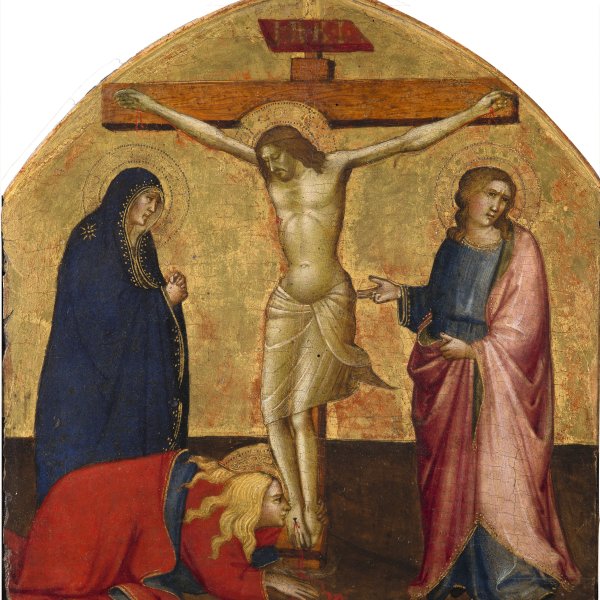Agnolo Gaddi
Active in Florence in 1369-Florence, 1396
Agnolo Gaddi must have been born in Florence around 1345. He belonged to a family of painters: his grandfather Gaddo Gaddi was of the generation of Giotto, who taught Agnolo’s father Taddeo Gaddi, one of the most influential painters in Florence. In addition, his brother Giovanni was a painter.
Agnolo is documented for the first time in 1369 when he was paid for a work executed in the Vatican in collaboration with his brother and Giovanni da Milano. His style combines the influence of his father, of Florentine art and of the circle of Orcagna, as well as that of Giovanni da Milano. Gaddi’s painting continued to evolve and the artist used a wealth of realist details and an emphasis on the narrative elements in his compositions. In the 1360s he executed a large number of works, including the frescoes for the funerary chapel of the Rossi de’Strozzi family in Santa Maria Novella in Florence; the decoration of the Castellani chapel in Santa Croce, begun with other artists including Gherardo Starnina in 1373; a wing of a triptych now in the Walters Art Gallery, Baltimore, and another triptych, dated 1375 (Galleria Nazionale, Parma). In 1380 Gaddi is again mentioned with regard to an Annunciation for the Ospedale del Bigallo (now lost), and some frescoes (destroyed) for the chancel of Santa Maria del Carmine in Florence, described by Vasari. Also dating from this period is The Virgin in the National Gallery in London. Between 1380 and 1390 he painted frescoes for the church of Santa Croce, Florence, on the Legend of the True Cross.
Gaddi was an important painter who exercised considerable influence over late 14th- and early 15th-century Florentine painting, particularly the work of Lorenzo Monaco and Gherardo Starnina. At the end of his career he worked in Prato cathedral.
Agnolo is documented for the first time in 1369 when he was paid for a work executed in the Vatican in collaboration with his brother and Giovanni da Milano. His style combines the influence of his father, of Florentine art and of the circle of Orcagna, as well as that of Giovanni da Milano. Gaddi’s painting continued to evolve and the artist used a wealth of realist details and an emphasis on the narrative elements in his compositions. In the 1360s he executed a large number of works, including the frescoes for the funerary chapel of the Rossi de’Strozzi family in Santa Maria Novella in Florence; the decoration of the Castellani chapel in Santa Croce, begun with other artists including Gherardo Starnina in 1373; a wing of a triptych now in the Walters Art Gallery, Baltimore, and another triptych, dated 1375 (Galleria Nazionale, Parma). In 1380 Gaddi is again mentioned with regard to an Annunciation for the Ospedale del Bigallo (now lost), and some frescoes (destroyed) for the chancel of Santa Maria del Carmine in Florence, described by Vasari. Also dating from this period is The Virgin in the National Gallery in London. Between 1380 and 1390 he painted frescoes for the church of Santa Croce, Florence, on the Legend of the True Cross.
Gaddi was an important painter who exercised considerable influence over late 14th- and early 15th-century Florentine painting, particularly the work of Lorenzo Monaco and Gherardo Starnina. At the end of his career he worked in Prato cathedral.





